
Modern Pagans celebrate eight major holidays throughout the year, known as Sabbats. They are based on pre-Christian customs related to the movement of the sun. Most are related to the Celtic agricultural festivals that have given them their names.
Of course, now we know that the sun doesn’t actually move around the earth. And lots of Pagans live far away from the places where our food is grown. But the Sabbats are still a meaningful way to connect with the cycles of the seasons and of human life.
The Pagan Sabbats include the four astronomical holidays (the equinoxes and solstices) and four traditional holidays in between. Together, these eight festivals are known as the Wheel of the Year. They are observed in Wicca and Wicca-influenced forms of neo-Paganism.
Learn about the eight Witch’s holidays and some popular customs for each one:
Samhain
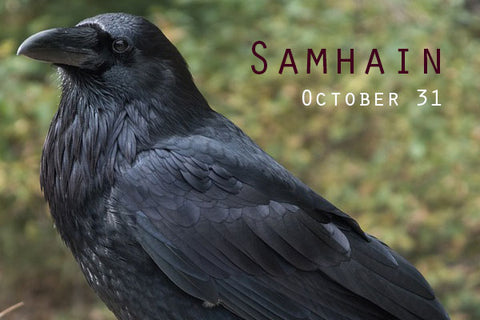
Probably the best-known of the Sabbats, Samhain is celebrated on October 31st. It coincides with Halloween or All Hallows Eve. Halloween is a time when even non-magickal people indulge in spooky activities and ancient superstitions. It's also the time when mainstream culture pays the most attention to the activities of Witches and Pagans.
The word Samhain comes from the Irish Gaelic word for “summer’s end.” The days have become shorter, and the darker half of the solar year is upon us. At this time, farmers would use up the remaining stores of perishable fruits and vegetables, preserving other foods to sustain them through the cold and dark season. They would also slaughter any livestock that they did not plan to feed through the winter. This is why we sometimes refer to Samhain as the Third Harvest, or Blood Harvest.
At Samhain, many people believe the boundary between the words is at its thinnest. Samhain is also known as Ancestor’s Night or the Feast of the Dead. For most Witches, Samhain is the best time to commune with the beloved dead (ancestors and honored spirits). Some also believe that lonely or angry spirits may wander the Earth on Samhain night, looking for humans to annoy.
How Pagans celebrate: For Pagans, Samhain is the beginning of the new year. It is a holiday of reflection and celebration. At Samhain, we cast off the old year’s attachments and turn our attention to the coming scarcity of winter. We feast on the last of summer’s bounty. We contemplate what is worth saving and nurturing during the dark of winter. We try to make friends with Death.
Pagans celebrate Samhain in many of the same ways muggles do: Scarfing down sweets, carving jack-o-lanterns, dressing up in costumes. We decorate with skulls and spiders and go to haunted houses. All of these Halloween traditions are too fun to miss out on—and besides, most of them have their roots in old Pagan beliefs, anyway.
If you’re invited to a Samhain ritual, you may see an ancestor altar. This is a shared altar where participants are invited to pile on their mementos and offerings for the dead. The presiding priest or priestess may invoke a deity who rules over transitions or the migration of souls—Morrighan, Hecate, or Hermes. You may participate in a meditation where you travel into the depths of the underworld, or look departed friends in the eye once more. People will speak the names of loved ones who died during the previous year, or long ago.
Feasting is a component of many Samhain rituals. When we eat sweets, we are savoring the sweetness of life and its impermanence. When we eat meat, we remember that all flesh must die and become nourishment for some creature or another.
We also use food as an offering to the dead—to communicate fond memories, to pay our respects—and perhaps, to appease hungry ghosts. Some Pagans set an extra plate at the Samhain table for spirit visitors. Another contemporary Pagan custom is the “dumb supper”—a silent meal where we invite our ancestors (both known and unknown) to come and dine with us.
Yule
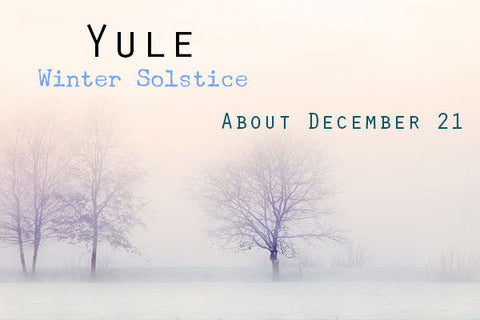
Yule is the Pagan name for the Winter Solstice, the longest night of the year. In the Northern Hemisphere, it falls on or around December 21.
After the winter solstice, the darkest part of the year is over and the days begin increasing in length. This solar holiday is related historically to Christmas—Pagans delight in pointing out that Christians co-opted the date around the third century CE.
In the overarching neo-Pagan mythos, Yule is the birthday of the divine infant who is conceived in the spring. The dark of midwinter is the period of the Goddess’s confinement and labor as she prepares to welcome the solar child. On the longest night, the Sun God is born to the praise and gratitude of all Earth’s creatures.
How Pagans celebrate:
Yuletide is a time for passive, personal magick—for short days of work and long nights of dreaming. We set intentions and incubate our plans. It is a time of preparing mentally and spiritually for the light half of the year. Some Pagans keep a midwinter vigil, awaiting the rebirth of the sun at dawn.
It’s not often that you find large group rituals for Yule—probably because lots of Pagans are busy traveling and visiting with non-Pagan family! Instead, Yule rituals tend toward the home-y and conventional.
We decorate with evergreens and holly. We exchange gifts with friends and family. On Midwinter Eve, we light candles to herald the return of the sun. (The ambitious among us may set a Yule log blazing.) We eat traditional, calorie-rich holiday foods: Tamales, eggnog, rum cake, ham, and chocolate. We give thanks for the life-giving energy of our planet’s sun.
Imbolc

Imbolc is a festival of purification and the early signs of spring. Imbolc is celebrated on Feb 1. (Not yet spring in most of the world, to be sure—but sometimes spring-like in Britain due to the warming influence of the Gulf Stream.) It is the first of the three Pagan fertility festivals, followed by Ostara and Beltane.
In Old Irish, Imbolc means “in the belly” and was associated with the onset of the lambing season. It was an obscure Irish folk festival until the 20th century, when neo-Pagans revived it as part of the Wheel of the Year. It coincides with the Christian festival of Candlemas and with that old farmer’s oracle, Groundhog’s Day, both observed on Feb. 2.
For our ancestors, the significance of Imbolc would have been the beginning of the ground thaw. It is the time to prepare for the planting season—to survey the land, take an inventory of tools, and make any repairs or modifications that will be needed. For the Witch, it also a time of preparation. We clean and bless our altars, and make sure that the tools of our practice are attuned to their intended use.
Mythically, Imbolc celebrates the awakening of the Goddess after giving birth to the young God at Yule. In the Earth, we observe the first stirrings of life after the frozen winter. (If you don’t know what a frozen winter looks like, ask your grandmother.) Imbolc brings the energy of creativity and imagination. Projects that were put on hold during the holiday season start to creak into motion again. Our midwinter dreams resolve themselves into their first visible shapes.
How Pagans celebrate:
Imbolc is especially sacred to Brigid—Celtic Goddess of hearthfire, healing, the bardic arts, and smithwork. Many Imbolc rituals honor Brigid with candlelight, poems, and woven ornaments known as Brigid’s crosses. The first light of spring is evident by now, and it is an auspicious time of year for rites of cleansing, healing, and blessing.
Imbolc is a time for spiritual dedication and re-dedication. Some covens—especially women’s covens—initiate new members at Imbolc. For old Pagans, it is also a time to examine and refresh our practice. If we have become lax, Imbolc is an opportunity to purify our intentions and reconnect with spiritual guides. We light candles, open windows, and wash the floors to cast out the last gloom of winter. Some also use Imbolc for divination for the year’s harvest.
Imbolc is not really a feasting holiday, as the season of grains and fruits is months away. The first food of the year is dairy. Butter, milk, and cream are traditional foods for the Imbolc table.
Ostara

Ostara is the spring equinox, which falls on or about March 21 in the Northern Hemisphere. It is opposite the autumn equinox (which Pagans refer to as Mabon). But any desktop calendar can tell you that. Ostara is the Pagan cousin of the Easter holiday, a modern revival of one or more ancient spring celebrations.
Ostara is the second of three fertility festivals, a time when the blessings of spring become more visible in the natural world. Flowers bloom, the birds and the bees do their thing, and grocery aisles fill up with pastel-colored treats. Ancient fertility symbols like eggs and bunnies are everywhere. (Yep, Ostara is the Sabbat with the rabbit!)
Astronomically speaking, Ostara is a midpoint of the year, and day and night are equal at this time. The Sun God (who has been growing and gathering strength since Yule) is an adolescent. The Great Goddess, who has been getting progressively younger since December 21, is in her maiden form. These two lusty youths are now the same age, and will soon conceive the child who will be born at Yule.
How Pagans celebrate:
The original meaning of Ostara as a fertility festival is not lost on modern Pagans. Ostara provides a perfect opportunity to work magick for love, prosperity, and gains of any kind. We harness the energy of the lengthening days to fuel our desires and bring projects to fruition. We honor the gifts of the earth Goddess, who is presently blessing the land with beauty and nourishment.
Pagans also use Ostara as a time to reflect on the principle of balance. Everyone has goals and responsibilities—work, family, art, spirituality—that compete for our time and attention. At Ostara, we take a moment to notice things that may have shifted out of balance. We reset our priorities as the austerity of winter gives way to the exuberance of spring.
Beltane
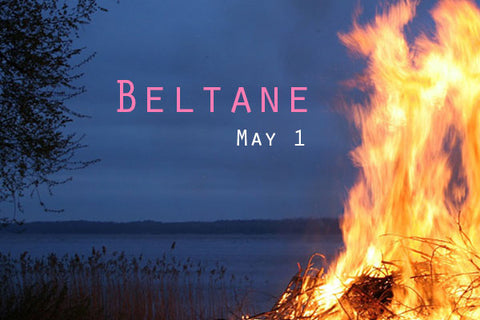
Beltane is the ancient name for the May Day rite, held on May 1. Originally a fire festival, it was widely celebrated in pre-Christian Ireland and Scotland. The name comes from the god Bel (“the bright one”) and means “Bel’s fire.” It is the second of two principle festivals on the Celtic Pagan calendar, the other one being Samhain. Samhain and Beltane are the two poles of the magickal year, when the gates to Faery and the spirit world are most open to travelers.
In traditional Wicca, Beltane is a sexual festival, the last of the three fertility festivals. It is the time when the Maiden Goddess takes a lover in the form of the young God. Wiccans enact this drama through the ritual marriage (Great Rite) of a High Priestess and High Priest, whose union will bless the land.
How Pagans celebrate:
Theoretically, Beltane is an occasion of unbridled sensuality and revelry. However, sexual rites are rare in modern covens. If invited to a Beltane ritual, you’re far more likely to dance around a maypole or witness a symbolic Great Rite (with a chalice and athame) than encounter an orgy.
For the social Pagan, Beltane season abounds with bonfires, festivals, concerts, and campouts. Solitary Pagans might celebrate by making an altar to the young God and Goddess or connecting with a lover. Flowers, honey, sweets and wine on the altar echo the sweetness of the occasion. Beltane is also a time for illusion, seduction, and Faery tricks. By the light of the Beltane fire, the real can become unreal (and vice versa).
Since Beltane celebrates the union of the God and Goddess, it is a popular time for proposals, handfastings, and renewing of vows. Magickally, the combined masculine and feminine energies lend a powerful alchemical surge to almost any type of spellwork.
Litha
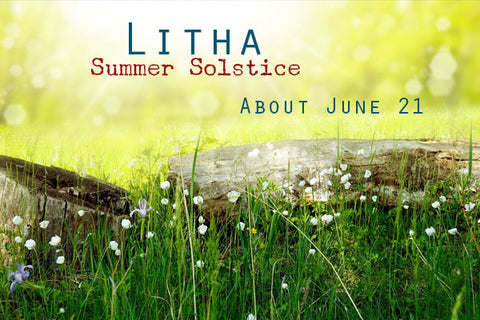
Litha is the summer solstice, which in the Northern Hemisphere falls on or about June 21. Linguists disagree about the origin of the Sabbat’s name, but summer festivals were common across pre-Christian Europe. People lit bonfires to keep the sun’s light alive for as long as possible. Solstice revels were supposed to bless the crops in the fields and drive away evil spirits.
Litha is the day when the Sun God is at the peak of his power. It is an auspicious day, ruled by the Sun and the element of Fire. After Litha, the nights will begin to grow longer and the Sun will move further away each day. With the fall harvest imminent, Litha is an opportunity for anticipating the (actual or symbolic) crop. Medieval people believed that Midsummer Night was blessed, and that whatever a person dreamed on this night would come true.
How Pagans celebrate:
Outdoor rituals are common at Litha, as Pagans take advantage of the long hours of daylight. It is a joyful Sabbat. Bonfires and summer games brighten the space between earth and sky. We decorate our altars with solar symbols, and honor the God in his aspect as Father.
Litha is an appropriate time for all magick ruled by the Sun. This includes spells of cleansing, protection, charisma, and truth.
Lammas
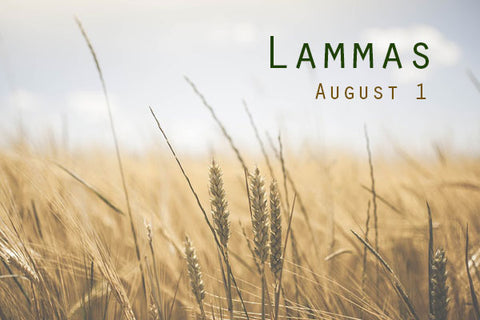
Lammas is the first harvest festival on the Pagan calendar, observed on or about August 1. It is related to an old agricultural holiday celebrating the reaping of grain. Lammas probably comes from the Old English words for “loaf mass.” Loaves of freshly baked bread would have been prepared from the first grain and blessed in churches around the countryside. Lammas is also called Lughnasadh, after the Celtic sun God, Lugh.
As the summer stretches on and the days grow shorter, the sun God symbolically loses some of his strength. He is not yet dead, but is aware that the dark season will soon approach. The god of summer “dies” in the fields to nourish the people, and prepares for rebirth at Yule.
How Pagans celebrate:
Lammas is a time to welcome the harvest. We give thanks that the year’s work is proceeding as planned, and that we will soon enjoy the fruits of our labor. Grain is the traditional food for the Lammas table, in the form of wheat, barley, beers and ales.
Celtic Pagans celebrate Lammas/Lughnasadh as the feast of Lugh, an agricultural god—but also a patron of poets, musicians, and craftspeople. At Lammas, we may show off the skills we have acquired and trade them for things we will need. It is a traditional time of year for craft fairs and local markets.
Mabon
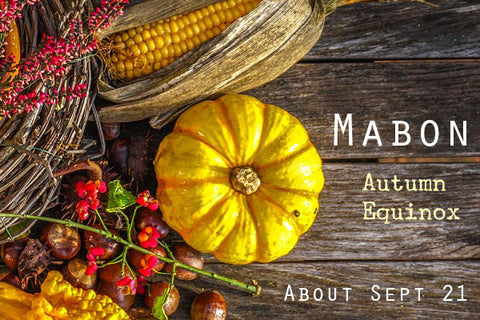
Mabon is the autumn equinox (or as us Texans call, it “fawwwl”). In the Northern Hemisphere, it falls around Sept 21. Mabon is the pivot point of the solar year when the days begin to shorten and winter is on its way. (The name of the festival is modern and dates from the 1960s or early 1970s.)
Mabon may also be called the Second Harvest, because it is the time when autumn fruits and nuts reach their maturity. It is a time to contemplate what we have worked for in the previous year and what rewards we are ready to reap. We give thanks to the waning sunlight and prepare to store our wealth away for the scarce season. We shift from active to contemplative magick. Mabon season is a fine time for workings of prosperity, gratitude, security, and balance.
How Pagans celebrate:
Mabon is a time for celebration after the hard work of the harvest. Though it is sad to watch the beauty of the growing season fade away, we revel in the mild weather and rest that autumn brings.
Mabon foods are comfort foods, those that evoke fond memories and connect us through sharing. We bake and brew, pickle and can. Offerings of wine, cider, fruits, and boughs may adorn the Mabon table—along with that most Pagan of centerpieces, the Cornucopia.
On the Pagan religious calendar, Mabon represents the turning point to the dark half of the year. We shift our attention from the youthful merriment of the summer Sabbats. At Mabon, we honor the Crone and Sage deities, the cycles of aging and death, and the spirit world.
Mabon is a popular time for large outdoor rituals—in part because the weather is good and it doesn’t conflict with any major mainstream holidays. We gather together to feast and express gratitude for our lovely tilted planet. Many cities host a public Mabon ritual as part of their annual Pagan Pride Day gatherings. Solitary Pagans might celebrate Mabon with offerings at a home altar, or a contemplative walk in the woods.
Read more in the archive!
